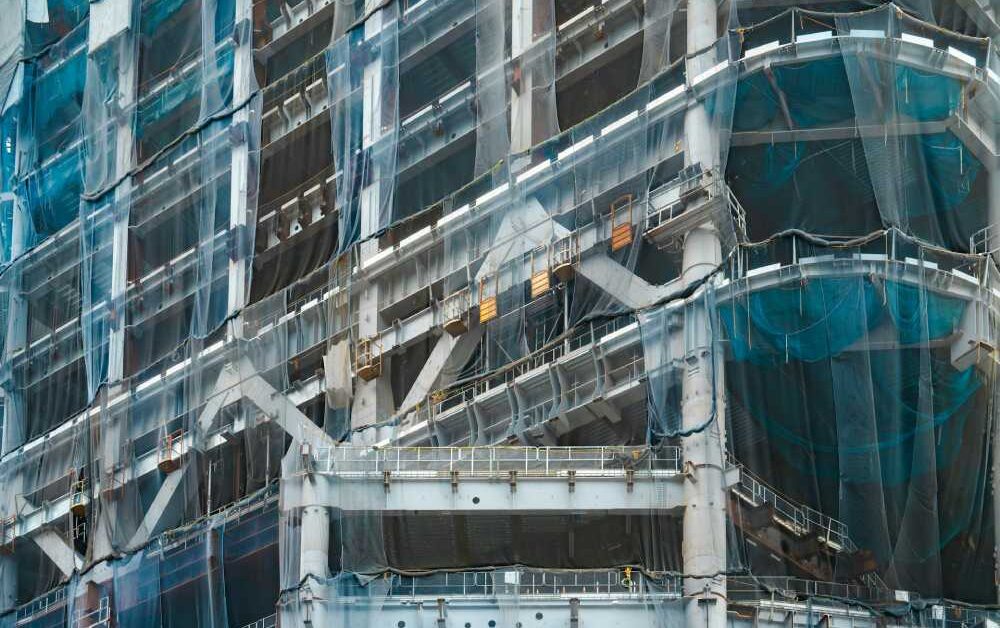Safety risks are a daily reality in the construction world, with falls representing one of the most significant threats to workers’ health and safety. Implementing a safety netting system is crucial in mitigating these risks and ensuring that job sites remain safe for everyone involved. According to the Occupational Safety and Health Administration, falls account for a substantial portion of all construction site accidents, highlighting the dire need for comprehensive fall protection strategies.
By integrating a reliable construction safety netting system into the construction workflow, companies comply with safety regulations and cultivate a culture of safety and trust among employees. Workers are more likely to perform their tasks efficiently and confidently when they know their well-being is prioritized.
This approach reduces accidents and boosts morale, productivity, and, ultimately, the project’s success. The trust built through these measures cannot be overstated, as it forms the foundation of a resilient workforce.
Contents
- 1 Innovations in Fall Protection Technology
- 2 Integration with Other Safety Measures
- 3 Training and Awareness Programs
- 4 Understanding Regulatory Standards
- 5 Cost-Effectiveness of Fall Protection Systems
- 6 Choosing the Right Fall Protection System for Your Site
- 7 Looking Forward: The Future of Construction Site Safety
Innovations in Fall Protection Technology
Construction safety is continuously evolving, with breakthrough technologies reshaping how risks are managed on sites. Modern fall protection systems leverage advanced materials and designs that enhance durability while reducing weight, making them easier and more comfortable for workers.
Additionally, integrating smart technologies, such as sensors that provide real-time net integrity and tension data, marks a significant leap forward in predictive safety management.
Integration with Other Safety Measures
Fall protection netting systems are most effective when integrated with a multifaceted safety strategy, including other preventive tools such as guardrails, personal fall arrest systems, and comprehensive safety training programs.
Custom debris netting can also be crucial in enhancing site safety by containing falling objects and reducing hazards for workers and bystanders. This creates a versatile safety net that addresses various potential hazards workers might face on the job. By coordinating the deployment of these safety measures, construction managers can ensure that sites remain secure and accidents are minimized.
The integration of these safety components must be seamless, allowing for quick adjustments and adaptations to the site’s changing dynamics. This interconnected safety approach protects workers and contributes to a safety awareness and responsibility culture. It symbolizes a proactive commitment to worker welfare beyond compliance, fostering an environment where team members are empowered to prioritize safety in their daily activities.
Training and Awareness Programs
Training is indispensable in the successful implementation of fall protection systems. Workers must use the equipment proficiently, understand its maintenance, and react appropriately in emergencies. Regular training sessions and safety drills are fundamental to maintaining high safety standards on construction sites. These programs should be tailored to address the unique risks of each site, ensuring that all personnel are adequately prepared for potential hazards.
Moreover, ongoing education sustains a culture of vigilance and readiness. By keeping safety protocols fresh in workers’ minds through periodic refreshers and simulations, companies reinforce a collective commitment to health and safety. Investing in people and training reduces the likelihood of accidents and enhances overall site productivity by minimizing disruptions caused by safety incidents.
Understanding Regulatory Standards
Compliance with regulatory standards is fundamental to using fall protection systems effectively. Guidelines provided by regulatory bodies such as the American National Standards Institute (ANSI) and the National Institute for Occupational Safety and Health establish performance and reliability benchmarks that must be consistently met across construction projects.
Adhering to these standards not only ensures the safety of workers but also protects construction companies from legal liabilities that may arise from non-compliance. Furthermore, staying aligned with current regulations can position companies favorably, demonstrating their commitment to excellence and safety to employees and stakeholders.
Cost-Effectiveness of Fall Protection Systems
Investing in fall protection systems is not just about safeguarding workers; it’s also a strategic financial decision. The costs associated with workplace accidents, including medical expenses, legal fees, and downtime, can be substantially higher than the investment in a high-quality safety system. By reducing the frequency and severity of incidents, these systems enhance a project’s financial health through improved efficiency and reduced insurance premiums.
Companies prioritizing safety often see long-term financial benefits, including a positive reputation and enhanced relationships with clients and partners. The payoff from a comprehensive safety strategy is multifaceted, impacting the bottom line and the company’s standing in the construction industry.
Choosing the Right Fall Protection System for Your Site
Each construction site presents unique challenges that must be addressed with tailored safety strategies. Factors such as site terrain, weather conditions, and the project’s complexity all play a role in determining the appropriate fall protection system. Engaging safety experts and conducting detailed risk assessments are crucial in selecting the most effective solution for any site.
These measures ensure that the chosen fall protection system provides optimal coverage and protection without imposing unnecessary costs or operational burdens. A strategic approach to fall protection can provide peace of mind and operational stability, allowing construction teams to focus on delivering projects safely and efficiently.
Looking Forward: The Future of Construction Site Safety
As the construction industry continues to evolve, so do the safety measures protecting workers. Integrating artificial intelligence, machine learning, and real-time data analytics into safety systems represents the next frontier in construction site safety. These technologies offer transformative potential, providing predictive insights and enhancing the precision of safety interventions.

